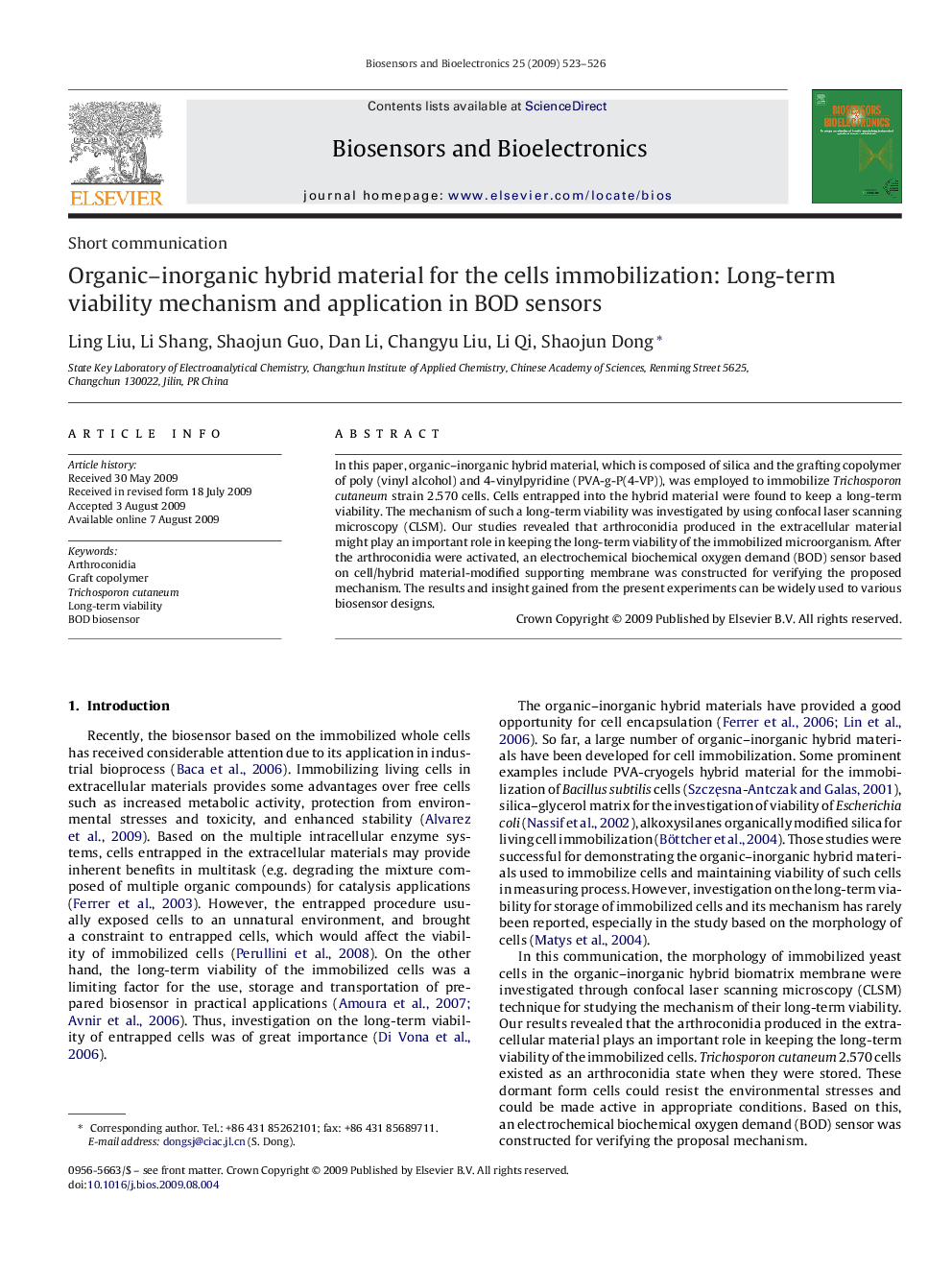| Article ID | Journal | Published Year | Pages | File Type |
|---|---|---|---|---|
| 869051 | Biosensors and Bioelectronics | 2009 | 4 Pages |
In this paper, organic–inorganic hybrid material, which is composed of silica and the grafting copolymer of poly (vinyl alcohol) and 4-vinylpyridine (PVA-g-P(4-VP)), was employed to immobilize Trichosporon cutaneum strain 2.570 cells. Cells entrapped into the hybrid material were found to keep a long-term viability. The mechanism of such a long-term viability was investigated by using confocal laser scanning microscopy (CLSM). Our studies revealed that arthroconidia produced in the extracellular material might play an important role in keeping the long-term viability of the immobilized microorganism. After the arthroconidia were activated, an electrochemical biochemical oxygen demand (BOD) sensor based on cell/hybrid material-modified supporting membrane was constructed for verifying the proposed mechanism. The results and insight gained from the present experiments can be widely used to various biosensor designs.
